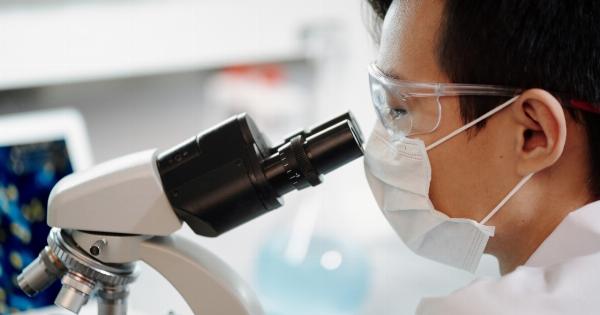Uterine cancer, also known as endometrial cancer, primarily affects the lining of the uterus.
The exact causes of this cancer are unknown, but researchers believe that several factors may contribute to the development of the disease, including certain viruses. In this article, we will explore the viruses that can lead to uterine cancer.
Human papillomavirus (HPV)
HPV is a common sexually transmitted virus that can cause cervical cancer, and recent studies have shown that it might also be a cause of uterine cancer.
Research indicates that HPV might cause uterine cancer by promoting mutations in the cells of the cervix, which can eventually lead to cancer. HPV is spread through sexual contact with an infected partner and can be prevented by vaccination.
Human Herpesvirus 8 (HHV-8)
HHV-8 is a virus that is associated with Kaposi’s sarcoma, a type of cancer that primarily affects the skin and mucous membranes. Recent research has linked HHV-8 to the development of uterine cancer.
In one study, researchers found that women who were infected with HHV-8 had a higher risk of developing uterine cancer than women who were not infected. HHV-8 is spread through sexual contact and blood transfusions.
Human Immunodeficiency Virus (HIV)
HIV is a virus that attacks the immune system, and it can be a cause of uterine cancer. Women who are infected with HIV are more likely to develop uterine cancer than women who are not infected.
Research indicates that HIV might cause uterine cancer by suppressing the immune system and allowing tumors to grow unchecked. HIV is spread through contact with infected bodily fluids, including blood, semen, vaginal secretions, and breast milk.
Epstein-Barr virus (EBV)
EBV is a common virus that is associated with several types of cancer, including lymphoma, nasopharyngeal carcinoma, and gastric cancer. Recent studies have shown that EBV might also be a cause of uterine cancer.
In one study, researchers found that women who were infected with EBV were more likely to develop uterine cancer than women who were not infected. EBV is spread through contact with infected bodily fluids, including saliva and blood.
Cytomegalovirus (CMV)
CMV is a virus that is associated with several health problems, including birth defects, neurological disorders, and immune system disorders. Recent research has linked CMV to the development of uterine cancer.
In one study, researchers found that women who were infected with CMV had a higher risk of developing uterine cancer than women who were not infected. CMV is spread through contact with infected bodily fluids, including saliva, blood, urine, and breast milk.
Varicella-Zoster Virus (VZV)
VZV is a virus that causes chickenpox and shingles. Recent research has indicated that VZV might also be a cause of uterine cancer.
In one study, researchers found that women who had a history of chickenpox or shingles had a higher risk of developing uterine cancer than women who did not have a history of these diseases. VZV is spread through contact with infected bodily fluids, including saliva, blood, and respiratory secretions.
Hepatitis B and C viruses (HBV and HCV)
HBV and HCV are viruses that can cause liver cancer, but recent research has suggested that they might also be a cause of uterine cancer.
One study found that women with hepatitis B had a higher risk of developing uterine cancer than women who were not infected, while another study found that women with hepatitis C had a higher risk of developing uterine cancer than women who were not infected. HBV and HCV are spread through contact with infected blood and bodily fluids.
Coxsackievirus
Coxsackievirus is a virus that is associated with several health problems, including hand, foot, and mouth disease, and myocarditis. Recent research has linked Coxsackievirus to the development of uterine cancer.
In one study, researchers found that women who were infected with Coxsackievirus had a higher risk of developing uterine cancer than women who were not infected. Coxsackievirus is spread through contact with infected bodily fluids, including saliva and feces.
Adenovirus
Adenovirus is a virus that is associated with several health problems, including respiratory infections, conjunctivitis, and diarrhea. Recent research has linked Adenovirus to the development of uterine cancer.
In one study, researchers found that women who were infected with Adenovirus had a higher risk of developing uterine cancer than women who were not infected. Adenovirus is spread through contact with infected bodily fluids, including saliva and respiratory secretions.
Conclusion
Several viruses are associated with uterine cancer, including HPV, HHV-8, HIV, EBV, CMV, VZV, HBV, HCV, Coxsackievirus, and Adenovirus.
While the exact mechanisms by which these viruses cause uterine cancer are still under investigation, it is clear that infection with any of these viruses can increase a woman’s risk of developing uterine cancer. Therefore, it is important to protect yourself from these viruses by practicing good hygiene, safer sex, and getting vaccinated when possible.






















